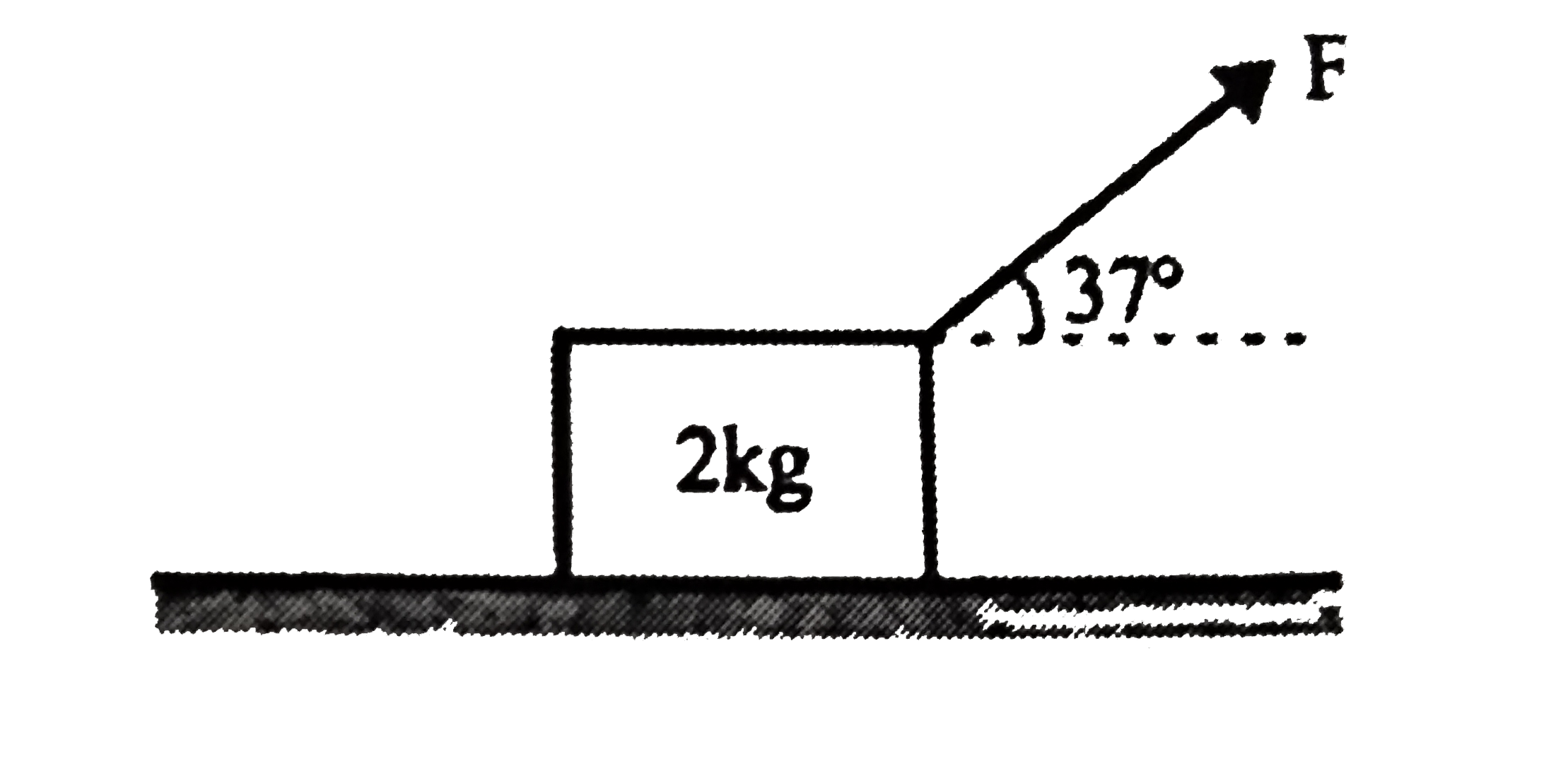A body of mass 1 kg rests on a horizontal floor with which it has a coefficient of static friction 1√3. It is desired to make the body move by applying the minimum possible force FN. The value of F will be ________. (Round off to the Nearest Integer)
[Take g=10ms−2]
To solve the problem, we need to find the minimum force F required to overcome static friction and move a body of mass 1kg resting on a horizontal floor with a coefficient of static friction μ=1√3.
1. Identify the Forces Acting on the Body:
- The weight of the body W=mg where m=1kg and g=10m/s2.
- Therefore, W=1×10=10N.
- The normal force N acts vertically upward, and the weight acts downward.
2. Static Friction Force:
- The maximum static friction force fs that can act on the body is given by:
fs=μN
- Since the body is on a horizontal surface and there is no vertical motion, the normal force N is equal to the weight of the body:
N=W=10N
- Thus, the maximum static friction force is:
fs=μmg=1√3×10=10√3N
3. Applying Force F:
- To move the body, the applied force F must overcome the static friction. Therefore, we set up the equation:
F=fs
- This means:
F=10√3N
4. Calculating the Value of F:
- To find the numerical value of F, we calculate:
F=10√3≈101.732≈5.77N
5. Rounding Off:
- Rounding 5.77 to the nearest integer gives us 6.
Final Answer:
The value of F will be 6 N.
- The weight of the body W=mg where m=1kg and g=10m/s2.
- Therefore, W=1×10=10N.
- The normal force N acts vertically upward, and the weight acts downward.
- The maximum static friction force fs that can act on the body is given by:
fs=μN
- Since the body is on a horizontal surface and there is no vertical motion, the normal force N is equal to the weight of the body:
N=W=10N
- Thus, the maximum static friction force is:
fs=μmg=1√3×10=10√3N
- To move the body, the applied force F must overcome the static friction. Therefore, we set up the equation:
F=fs
- This means:
F=10√3N
- To find the numerical value of F, we calculate:
F=10√3≈101.732≈5.77N
- Rounding 5.77 to the nearest integer gives us 6.
The value of F will be 6 N.
Similar Questions
A blocky of mass m rests on a horizotal floor with which it has a coefficient of static friction μ. It is desired to make the body move by applying the minimum possible force F. Find the magnitude of F and the direction in which it has be applies.
View SolutionA particle of mass m rests on a horizontal floor with which it has a coefficient of static friction μ. It is desired to make the body move by applying the minimum possible force F. Find the magnitude of F and the direction in which it has to be applied.
View Solution
Knowledge Check
A blocky of mass m rests on a horizotal floor with which it has a coefficient of static friction μ. It is desired to make the body move by applying the minimum possible force F. Find the magnitude of F and the direction in which it has be applies.
AμmgB√1+μ2μmgCμ√1+μ2mgDμmg√1+μ2A block of mass 2 kg is kept on a rough horizontal floor an pulled with a force F. If the coefficient of friction is 0.5. then the minimum force required to move the block is :-
 A10 NB10011NC1008ND20 N
A10 NB10011NC1008ND20 NA body of mass 2 kg at rest on a horizontal table. The coefficient of friction between the body and the table is 0.3 . A force of 5N is applied on the body. The force of friction is
A5NB5.88NC6ND20N
A body of mass m rests on a horizontal rough platform. Coefficient of static friction is u. Calculate the minimum possible force required to move the body along the platform.
View SolutionA block of mass m rests on a horizontal floor for which coefficient of friction is μ . Find the magnitude and the direction of force that should be applied to just move the block so that the applied force is minimum.
View SolutionTwo blocks ( m = 0.5 kg and M = 4.5 kg) are arranged on a horizontal frictionless table as shown in figure. The coefficient of static friction between the two blocks is 37. Then the maximum horizontal force that can be applied on the larger block move together is _____________ N. ( Round off to the Nearest Integer ) [Take as 9.8ms−2 ]

View SolutionA body of mass Mis kept on a rough horizontal surface with friction coefficient =μ. A person is trying to pull the body by applying a horizontal force but the body is not moving. The force by the surface on A is F where
View SolutionAn ice cart of mass 60 kg rests on a horizontal snow patch with coefficient of static friction 1/3. Assuming that there is no vertical acceleration, then the magnitude of the maximum horizontal force required to move the ice cart is (g = 9.8 ms−2)
View Solution